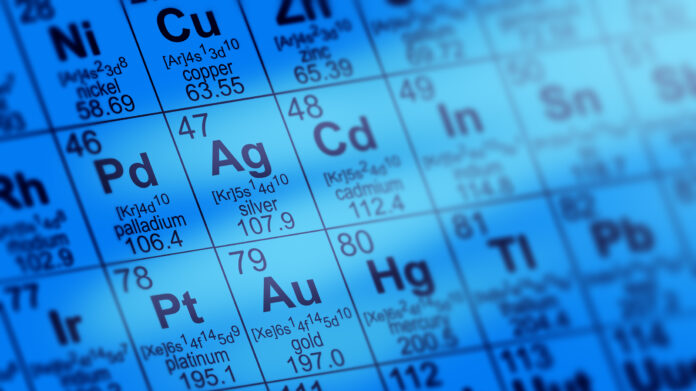Three reasons stand out. First, there has long been underinvestment in platinum resource development. Miners without near-term growth face high stay-in-business capex demands.
Second, high inflation is putting pressure on operating costs, which growth can offset.
Thirdly, there is an absence of obvious merger and acquisition options in South Africa’s PGM industry owing to existing high concentration which makes dealmaking complex. Take the purchase by Impala Platinum of Royal Bafokeng Platinum between 2021 and 2023, which was long held up in Competition Tribunal proceedings.
“Those with proper [growth] strategies will be under less pressure to capitalise on future cycles,” said Adrian Hammond, an analyst at SBG Securities.
He likes Northam Platinum and Valterra Platinum, the Anglo American spinoff. Both companies “present growth, cost and capital discipline while remaining countercyclical”, Hammond said.
Northam has tripled its production in the past 10 years organically, but a 6% increase in production over the next four to five years is still on the cards, said Citi. “We view Northam’s business as robust with better fundamentals than most peers.”
Northam also has the highest exposure to platinum, rhodium and ruthenium, a minor metal which has exposure to AI applications and materials required for data centres. Its meaningful chrome by-products also help offset PGM price dips. “We can see a notable difference in free cash flow margins,” said Hammond of the company he has consistently backed, even through the PGM price slumps of the past two to three years.
Shares in Valterra are up 72% since it began trading independently of Anglo American. Part of this improvement is on the expectation that it would report a far stronger second half to its financial year after flooding smacked output.
The announcement last month by Anglo that it would sell its remaining 19.1% stake in Valterra has removed an overhang. There are also cost benefits from the demerger still to flow. But there are other reasons analysts like the company. An increase in investment in its processing facilities in Rustenburg, from only R500m in 2016 to about R6bn last year, has improved Valterra’s downstream operational flexibility and efficiencies.
It is able to produce refined metal from less concentrate. This is a more efficient use of working capital — whereas rivals build inventories of concentrate before refining. “These assets are a key strategic advantage which should support its premium valuation multiples relative to peers,” said Arnold van Graan, an analyst for Nedbank Securities.
A potential doubling up in concentrate production from Mogalakwena, Valterra’s most important mine, is its ace in the hole. It provides economies of scale and an ability to ramp up production if necessary, say analysts.
Structural decline
Unfortunately for South Africa, PGM mines with Mogalakwena’s scale, growth potential and option value aren’t common. UK consultancy Metals Focus this year referred to structural declines in platinum supply. It is expensive and time-consuming to build new mines, and tricky to develop existing reserves.
Patrice Motsepe’s African Rainbow Minerals (ARM) has found recommissioning Bokoni Platinum Mines to be a headache. ARM bought the mine in 2022 for R3.5bn with a view to accessing higher grades through mechanised mining.
Alas, the investment was written down in the group’s 2025 accounts for R2.2bn. While this was partly a function of metal prices, a new development study up for review in 2026 suggests that it got its initial plans wrong. If approved, first production would be only in seven years, after capex of about R15bn.
Analysts at RMB Morgan Stanley calculate that Bokoni could generate an internal return of 17%. That’s an attractive return, they say, but add that the lead time to first production is very long. “Herein lies the dilemma faced by so many mining projects, not just in PGMs but indeed all commodities: what will project economics look like when mining commences?” the bank said.
South Africa’s PGM industry had 81 operating shafts in 2008, producing 95,000 ounces per shaft of PGMs — the three major metals of platinum, palladium and rhodium — for a total of 7.7 million ounces, according to Nedbank Securities data. By the end of 2025, the number is expected to decline to 53 shafts, the bank sai. That would leave South Africa with output of 126,000 oz per shaft, the equivalent of 67-million ounces in total productive capacity.
“This reflects a shift from many smaller, shallow shafts to fewer, larger, deeper operations,” said Van Graan. By 2030, the shaft count could drop to about 47, the bank estimates. But there are already signs that South African PGM production is declining, which are helping to plump up expectations for the metals’ prices.
Global refined production of PGM fell 8% year on year in the first half of 2025, as South African supply was hit by the depletion of work-in-process inventory, flooding and ongoing processing constraints. While production losses for the full year are expected to moderate to about 3% year on year, platinum specifically is forecast for a full-year supply of 5.4-million ounces — a 6% decline.
“Excluding the impact of the 2014 strike and the ACP shutdown in 2020 [Amplats’s processing facilities], this would mark the weakest global output in 25 years, driven largely by reduced South African production,” said Metals Focus.
Hochreiter added: “South African supply of all PGMs will be down 10% year on year.” He has a forecast for 3.65 million ounces, down from four million ounces of South African supply in 2024.
A version of this article was first published in the Financial Mail.












